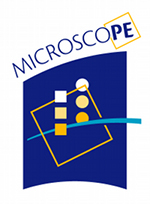Space environment simulations and free fall tests for MICROSCOPE
1 : Center of Applied Space Technology and Microgravity - University of Bremen
(ZARM)
-
Website
Am Fallturm 28359 Bremen Germany -
Germany
During its lifetime in space the attitude and the orbit of a satellite are influenced by different perturbances
resulting from the space environment. On the one hand these boundary conditions have an impact on the
design of the satellite, for instance the thermal shielding or the propulsion system. On the other hand, these
disturbances affect any data which are exchanged between a satellite and its ground station. For missions
that rely on high-precision measurements it is crucial to develop appropriate models for the environmental
perturbations in order to derive the correct science signal.
One important project in the field of fundamental physics is MICROSCOPE. The satellite will be operated in drag free
mode which means that all disturbances are reduced to a minimum by the attitude control system in order
to achieve high-precision differential acceleration measurements. Nevertheless residuals will remain due
to various sources. In preparation of the data analysis, which will start after the launch in 2016, ZARM
performs simulations in order to characterise the environmental conditions MICROSCOPE will be exposed
to on its orbit. For this purpose the High Performance satellite dynamics Simulator (HPS) is utilised, a tool
that is developed by ZARM in cooperation with the DLR Institute of Space Systems.
Another part of the ZARM contribution is the MICROSCOPE payload test under zero-g conditions with the drop tower facility in Bremen
- Presentation

 PDF version
PDF version
